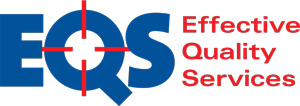Introduction
Medical devices touch lives in critical ways. From surgical tools to diagnostic equipment, patients and providers depend on them to perform safely and consistently. For companies in the medical sector, ISO 13485 certification is no longer optional. It is the international standard for quality management in the design, manufacture, and distribution of medical devices. Organizations that pursue certification are not just meeting a requirement; they are building trust, protecting patients, and strengthening their position in a highly regulated industry.
What ISO 13485 Covers
ISO 13485 is a quality management standard tailored specifically for the medical device industry. While it shares some principles with ISO 9001, it introduces additional requirements that address patient safety and regulatory compliance.
Key focus areas include:
- Risk management and product safety
- Strict documentation and traceability
- Regulatory alignment across global markets
- Control of sterile environments and contamination risks
- Post-market surveillance and feedback loops
This standard provides the framework to demonstrate consistent design, development, production, and delivery of safe medical devices.
Why Certification Matters
Global Regulatory Alignment
Regulatory bodies in many regions reference ISO 13485. Certification helps manufacturers meet requirements in the United States, Europe, Canada, and other markets. For companies looking to expand internationally, certification can streamline approvals and reduce barriers.
Risk Mitigation
Medical device recalls are costly both financially and reputationally. ISO 13485 emphasizes risk management practices that identify potential problems early. Strong documentation and testing requirements lower the chance of defective products reaching patients.
Customer and Partner Confidence
Hospitals, clinics, and distributors want reassurance that their suppliers are reliable. ISO 13485 provides third-party validation of quality practices. For smaller manufacturers, certification can serve as a differentiator against larger competitors.
Continuous Improvement
The standard is not just about compliance. It requires organizations to establish feedback systems, correct issues, and continuously improve. This mindset supports innovation while keeping patient safety at the forefront.
Who Needs ISO 13485
- Medical device manufacturers designing and producing products for patient care
- Suppliers and subcontractors that provide components or services critical to device safety
- Distributors who need to maintain product integrity during handling and shipping
- Sterilization and testing facilities responsible for meeting stringent safety benchmarks
Even companies that are not directly manufacturing finished devices often need certification to stay in the supply chain.
Challenges and How to Overcome Them
Adopting ISO 13485 can feel overwhelming, especially for smaller companies with limited resources. Common challenges include:
- The volume of documentation required
- Training staff to understand and apply the standard
- Aligning existing processes with certification requirements
- Preparing for regulatory inspections alongside ISO audits
The key to overcoming these challenges is a structured approach. Companies that invest in proper training, gap analysis, and phased implementation find the transition more manageable.
The Competitive Advantage
Certification is no longer just a regulatory checkbox. It is a strategic advantage. ISO 13485-certified companies can:
- Enter new global markets faster
- Build stronger relationships with customers and partners
- Reduce risk of recalls and legal exposure
- Demonstrate a commitment to patient safety and quality
For many organizations, these benefits outweigh the cost and effort of certification. In a competitive marketplace, ISO 13485 becomes a driver of growth and trust.
Medical device companies face intense scrutiny from regulators, healthcare providers, and patients. ISO 13485 provides the framework to meet these expectations while building stronger systems that reduce risk and improve quality.
Organizations that achieve certification do more than comply with regulations. They show a commitment to excellence and patient safety that sets them apart in the global medical market.
If your company is not yet certified, now is the time to begin. The cost of waiting is not just financial; it could mean lost opportunities, increased risk, and reduced trust. ISO 13485 is the standard that every serious medical device company must adopt to remain competitive.

